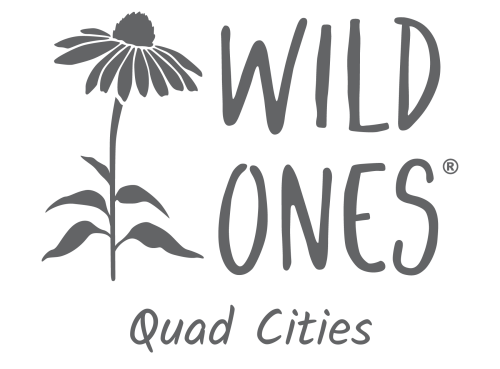by Gina Bartleson
My pollinator garden, located in Iowa City, began 8 years ago this year. It’s a continual work in progress. Each year, we have converted more of our yard to pollinator habitat. Each year, more native plants are added and the ones we already planted creep and expand. Each year, we see more insects, birds, and other animals benefiting from the mini-ecosystem we’ve tried to create.
May is a month of more blooming species in hues dominated by pink, purple, and blues. With more species blooming, there are more pollinators and pollinator species!

Wild columbine (Aquilegia canadensis), planted 7 years ago, has become larger and has lots of longer-lasting blooms as each year passes. Content in the shaded, rocky landscape next to our mailbox, we welcome the return of hummingbirds to the area that feed on the beautiful blooms on the way back to their summer breeding grounds.
Birdsfoot violet (Viola pedata) was added to our yard last year. The flowers are larger and the leaves are more lobed compared other violet species. Those violets surround our newly planted bur oak tree and they grow well in the sun while the oak continues to grow but will do fine in the shade when the oak matures.
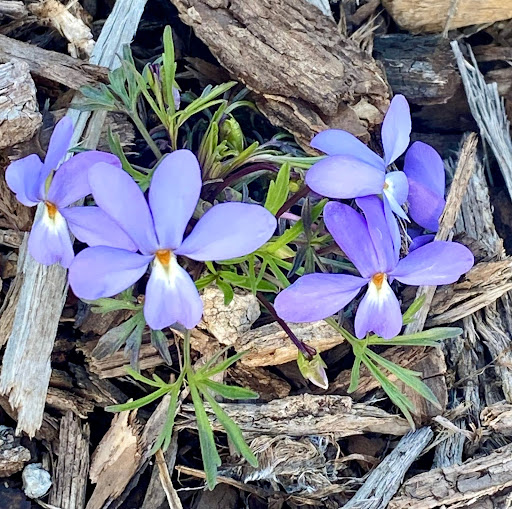
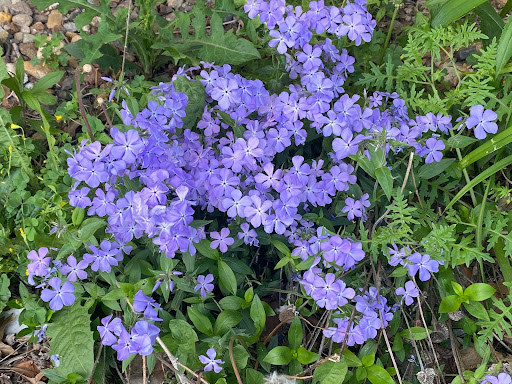
Wild Blue Phlox (Phlox divaricata) thrives in the shaded front garden. A long blooming plant that started late April, the leaves don’t die back even after flowering ends. Yet another important plant for spring-emerging bees.
Prairie Trillium (Trillium recurvatum) is growing successfully in a wooded corner of our garden and is forming clonal colonies as evidenced by the smaller plants reaching up below the two blooming ones. Little is known about the pollinators that visit these flowers. Like bloodroot and violets, trilliums add a treat to their seeds to entice ants to collect and disperse them.
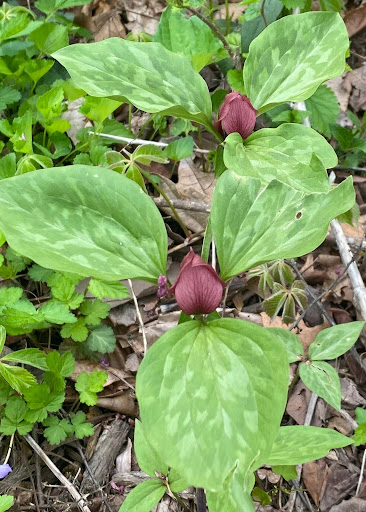
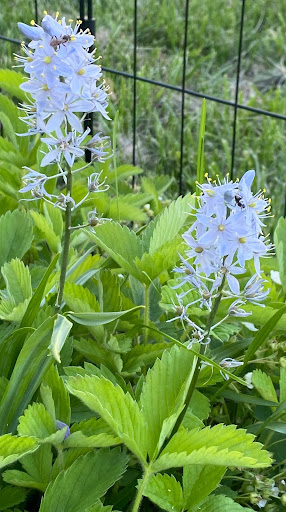
I think the Wild Hyacinth (Camassia scilloides) is much prettier than the garden hyacinth (Hyacinthus orientalis) that bloomed for the first time this year nearby, planted by a previous owner. I never saw an ant and bee on the non-native hyacinth while the Wild Hyacinth always had a visitor while it bloomed.
Prairie Smoke (Geum triflorum) is one of the most unique-looking flowers you can include in your native midwestern garden. From its odd pinnate leaves, its drooping buds, to its ethereal blooms, it’s just a beautiful little plant. We’ve had a tough time getting it established in our yard, our yard must get too hot in the summer, but finally it seems to be happy, putting out so many blooms this year. While we’ve struggled with making it happy, it does well in a wide variety of soil conditions.
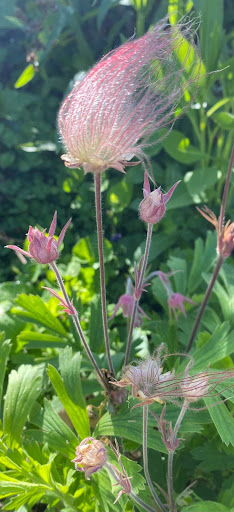
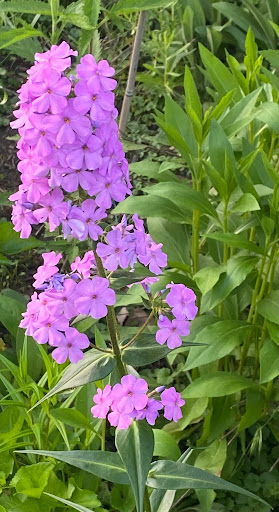
Speckled Phlox (Phlox maculata), named I assume for the speckles on the stem, is blooming impressively this year on one side of our yard but didn’t come up at all on the other side. Our soil may have too much clay to make this species happy. When you see this beautiful species in bloom, you can see why people confuse the Phlox spp. with Dame’s Rocket (Hesperis matronalis), a beautiful yet invasive non-native species. The easy way to tell the difference between the two plants is Phlox spp. have five petals and Dame’s Rocket has four petals.
Wild Blue Indigo (Baptisia australis) is in full bloom mid-May. Tall with stunning blue blooms that give way to large rattle-like seedpods later in the season. The flowers are primarily pollinated by queen bumblebees, like the Queen Black-and-Gold Bumble Bee (Bombus auricomus) in this picture. This is the first appearance of this bumble bee species in our yard.
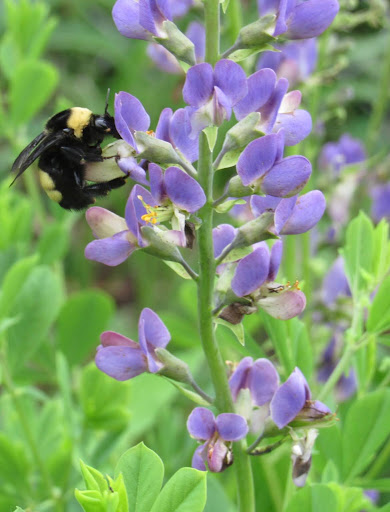
As the days grow warmer and longer, so does the number of species in our garden that are getting ready to bloom. See you in June!
Thank you so much for your contribution, Gina!
If you would like to submit a blog post, please contact our web chair, Emma Harmon, at [email protected]
